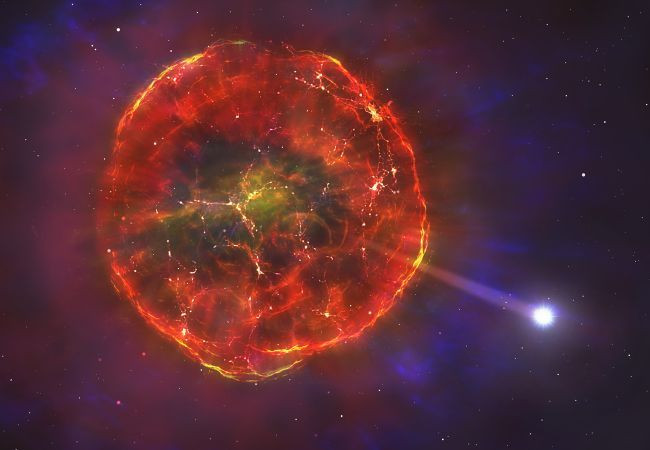Rare Peacock Stars Could Potentially Detonate Deadly Gamma Rays In The Milky Way [Video]
KEY POINTS
- Gamma-ray bursts are one of the most energetic occurrences in the universe
- Apep's two stars are 10 to 15 times more massive and 100,000 times brighter than the Sun
- The two stars also orbit each other about every 125 years
Apep, one of the Wolf-Rayets binary star systems dubbed as the “exotic peacocks of the stellar world” discovered in 2018, was found to have the capacity to detonate long gamma ray bursts that are potentially deadly. If it detonates, the explosion could be something never seen in the Milky Way before, according to scientists.
“As well as exhibiting all the usual extreme behavior of Wolf-Rayets, Apep’s main star looks to be rapidly rotating. This means it could have all the ingredients to detonate a long gamma-ray burst when it goes supernova,” Peter Tuthill, study lead and professor from the University of Sydney, said in a press release.
In the study published in the Monthly Notices of the Royal Astronomical Society, the team explained that gamma-ray bursts are one of the most energetic occurrences in the universe, adding that “they are potentially deadly.”
If the detonation happens on Earth, for instance, the explosion can destroy the ozone layer, exposing everyone and everything to the sun’s ultraviolet radiation. The scientists clarify that Apep’s axis of rotation is far from Earth and won’t affect humans when an explosion happens in the future.
Apep, a binary star system that is 8,000 light-years from Earth, was classified as a Wolf-Rayet two years ago. Being categorized as a Wolf-Rayet is already rare. Only a handful of stars made the cut to be categorized as one. Their temperatures are so hot that they collapse in a supernova explosion faster than the ordinary stars.
In the case of Apep, it is also recognized as one of the rarest Wolf-Rayets being an elegant binary pair orbiting one another. Their orbit shapes into a glowing whirlpool that resembles a sooty tail.
Aside from Apep potentially harboring deadly long gamma rays, the scientists also found that the two stars are both 10 to 15 times more massive than the Sun. Apep is also more than 100,000 times brighter than the Sun.
The team also found that Apep stars orbit each other about every 125 years. By estimates, they are orbiting at a distance the same size of the whole solar system.
Apep is also producing stellar winds with speeds that could only be described as “mind-blowing.”
“They are spinning off the stars about 12 million kilometers (7 million miles) an hour; that’s 1% the speed of light. Yet the dust being produced by this system is expanding much more slowly, at about a quarter of the stellar wind speed,” Yinuo Han, a University of Sydney’s student who participated in the new research on Apep, said in the same press release.
Han noted that the only explanation they have of Apep’s stellar wind speed is the fast rotating ability of the stars. He, however, acknowledged the team hasn't quite added up the physics of the stellar rotation.

© Copyright IBTimes 2024. All rights reserved.




















